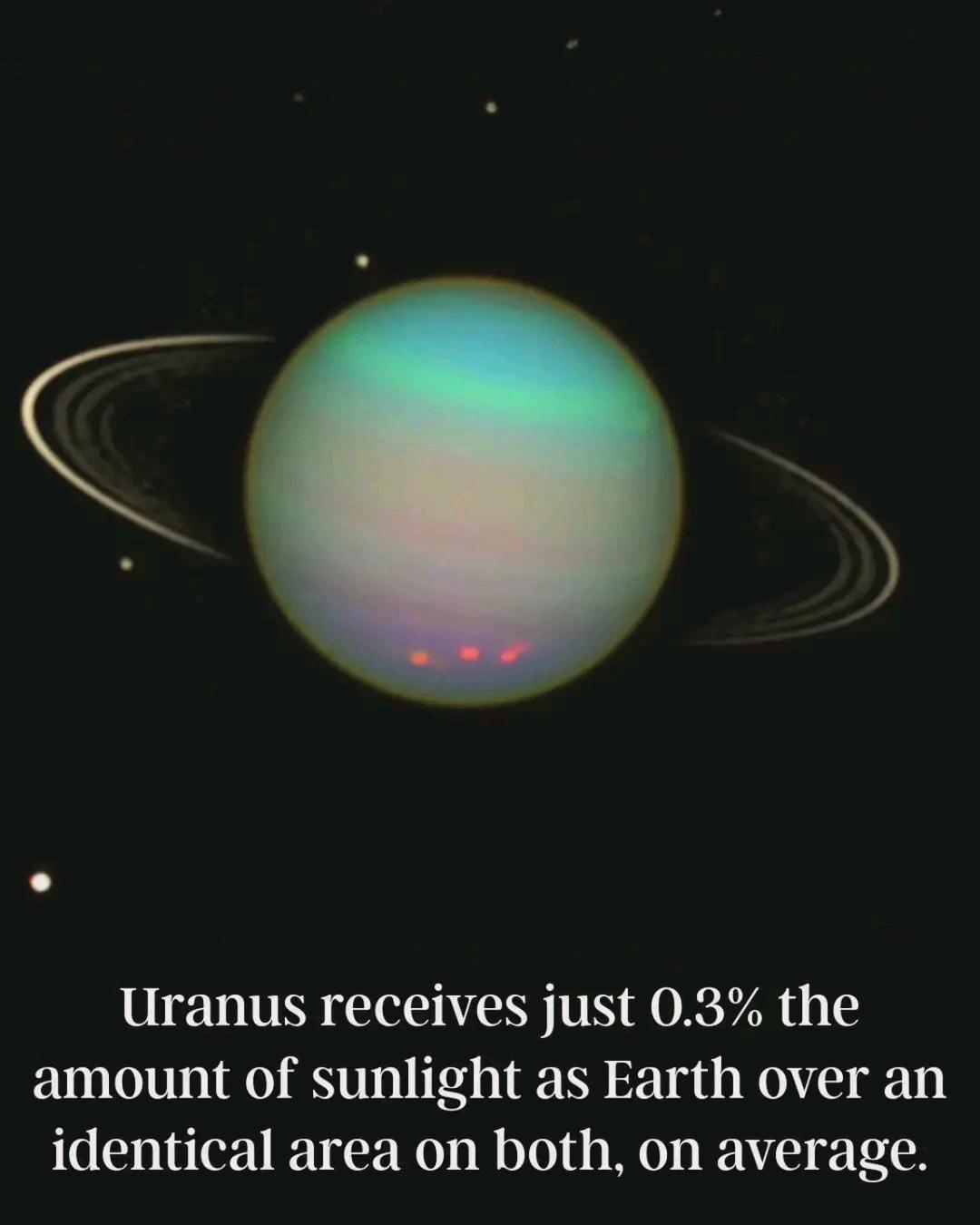Uranus, being much farther from the Sun than Earth, receives significantly less sunlight due to its distance and orbital characteristics. On average, Uranus gets about 0.3% of the sunlight Earth receives over an identical area.
This stark difference arises primarily from the inverse square law of light, which states that the intensity of sunlight decreases with the square of the distance from the Sun. Uranus orbits at an average distance of about 19.2 astronomical units (AU) from the Sun, compared to Earth’s 1 AU. Since 19.2 squared is approximately 368.64, the sunlight intensity at Uranus is roughly 1/368.64 of Earth’s, equating to about 0.27%—close to the stated 0.3%.
Additionally, Uranus’ extreme axial tilt of 98 degrees causes dramatic seasonal variations, affecting how sunlight is distributed across its surface over its 84-year orbit. This tilt leads to long periods where one hemisphere receives minimal light, further reducing average insolation.
Despite the low sunlight, Uranus’ atmosphere, rich in methane, absorbs and scatters light, contributing to its pale blue-green appearance. The planet’s distance and tilt make its energy budget vastly different from Earth’s, influencing its climate and atmospheric dynamics.
This stark difference arises primarily from the inverse square law of light, which states that the intensity of sunlight decreases with the square of the distance from the Sun. Uranus orbits at an average distance of about 19.2 astronomical units (AU) from the Sun, compared to Earth’s 1 AU. Since 19.2 squared is approximately 368.64, the sunlight intensity at Uranus is roughly 1/368.64 of Earth’s, equating to about 0.27%—close to the stated 0.3%.
Additionally, Uranus’ extreme axial tilt of 98 degrees causes dramatic seasonal variations, affecting how sunlight is distributed across its surface over its 84-year orbit. This tilt leads to long periods where one hemisphere receives minimal light, further reducing average insolation.
Despite the low sunlight, Uranus’ atmosphere, rich in methane, absorbs and scatters light, contributing to its pale blue-green appearance. The planet’s distance and tilt make its energy budget vastly different from Earth’s, influencing its climate and atmospheric dynamics.
Uranus, being much farther from the Sun than Earth, receives significantly less sunlight due to its distance and orbital characteristics. On average, Uranus gets about 0.3% of the sunlight Earth receives over an identical area.
This stark difference arises primarily from the inverse square law of light, which states that the intensity of sunlight decreases with the square of the distance from the Sun. Uranus orbits at an average distance of about 19.2 astronomical units (AU) from the Sun, compared to Earth’s 1 AU. Since 19.2 squared is approximately 368.64, the sunlight intensity at Uranus is roughly 1/368.64 of Earth’s, equating to about 0.27%—close to the stated 0.3%.
Additionally, Uranus’ extreme axial tilt of 98 degrees causes dramatic seasonal variations, affecting how sunlight is distributed across its surface over its 84-year orbit. This tilt leads to long periods where one hemisphere receives minimal light, further reducing average insolation.
Despite the low sunlight, Uranus’ atmosphere, rich in methane, absorbs and scatters light, contributing to its pale blue-green appearance. The planet’s distance and tilt make its energy budget vastly different from Earth’s, influencing its climate and atmospheric dynamics.
0 Commentaires
0 Parts
58 Vue



